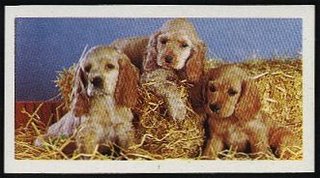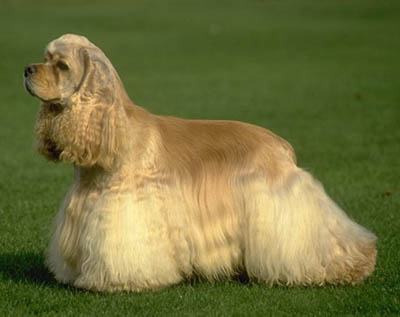You do tip your own hairdresser, don't you? This is the same kind of courtesy - a 15% tip - to let your dog groomer know you're happy with the style, care, and attention to detail she is peforming for your dog. When I groomed dogs at PetsMart, I noticed a wide range of tipping behaviours in the Grooming Salon. Some people leave nice, big tips - which are gratefully accepted. Some people leave a dollar or two, which is still a very nice token of appreciation, and never considered cheap. Yet a lot of folks don't tip at all, even when it's apparent that they are very pleased with the services rendered.
Grooming is a skilled trade that takes years of perfecting to get right. There are the five basic clips - body contour, hand scissoring (poodle, bichon), the bladed body/fuller leg (schnauzer), short-legged terrier (westie, cairn terrier, scottie), long-legged terrier (wire fox, airdale), and sporting clip (cocker, springer). And then there are the myriad variations on these themes that make up both the extreme end (show clips), to the casual end (pet and so-called "puppy" clips).
The groomer must be skilled with both shear and clipper blade, dog handling, nail trimming, dematting tools, body washing and, of course, blowdrying techniques. She must be able to quickly analyze a pet's skin and coat condition to select the proper shampoo and conditioner. There are as many kinds of treatments for dogs as their are for your own hair - from hypoallergenic oatmeal brands, to medicated dandruff shampoos, to those designed to brighten white fur or deodorize strong musky dog odors. She must be able to assess the condition of mats in the fur and recommend a proper cut to work with the owner's own daily care regime.
Groomers can help an owner with questions about proper canine nutrition (a poor diet shows up on the skin first), show how to properly brush out the coat, and even help the owner develop a proper toothbrushing routine for their favorite furry friend.
Since the groomer works intimately with each dog over a series of hours, they can alert the owners to changes in the dog's behaviours and body. Groomers might be the first to notice an oozing sore which might require a vet's attention, cut a dew claw before it can grow around and into the footpad, note changes in warts and old wounds, and pull out thorns from doggie toes that could have become staph infections in time.
A really good groomer will also try to ensure your dog has a nice day at the salon. Being away from their owners can be stressful for pooches, and not every dog enjoys a good bath and blowout. They might be foot-shy, which makes clipping nails problematic. Head-shy dogs don't like clippers or shears near their faces. It's the groomer's job to help the dog feel comfortable with the process, by using warm water, a gentle but firm hand, and soothing words through the process.
Many dogs come to enjoy being groomed. After all, they ARE being lavished with individual attention, something all canines crave. If an owner uses the same groomer each time, so much the better for the dog, who develops a bond with their own personal "hairdresser".
Dogs who are clean, dry and looking good always know it. They act happier, more light and alert, than when they arrive. When the pet parent arrives to pick up their "child", it's always very exciting and rewarding - the dog is happy to see their family, be smelled and held and fawned over. The excitement spills over to the groomer, who has worked so closely with the pet. So, while a tip is never mandatory, it is still a nice gesture
http://www.smartdogs.chillizone.net/

 Adult English Springers have beautiful, long, well feathered ears and profuse silky hair on their chest, legs and underbelly. All this needs to be regularly groomed and kept clean and free from knots.
Adult English Springers have beautiful, long, well feathered ears and profuse silky hair on their chest, legs and underbelly. All this needs to be regularly groomed and kept clean and free from knots. 














